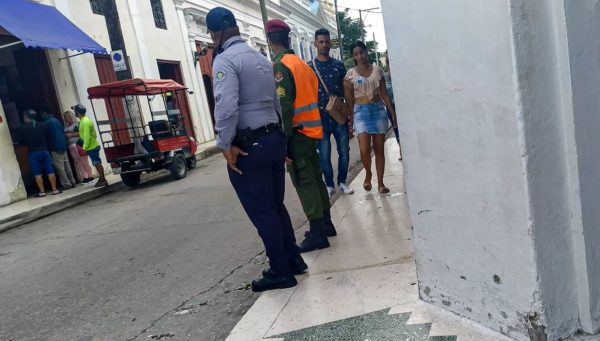Is Social Protest Wearing Thin in Cuba?

A point that has become crystal clear is which side violence comes from, the ones who have wanted to crush other Cubans.
HAVANA TIMES – Events in recent weeks linked to 15N (November 15th) and the Archipielago platform have gone hand-in-hand with civil lessons that can be seized and taken advantage of for social gain.
In a new episode of La Colada podcast, writer and journalist Jorge de Armas asks his colleague, political analyst Enrique Guzman Karell, about the post-15N landscape in Cuba and the role of Cuban citizens and Government. Young artist Camila Lobon joins them and also gives her two cents.
According to Guzman, social protest is not wearing thin in Cuba at all. Revolutionary situations and leaderships that arise in society gestate from reality itself. “As long as the State is unable to change and transform, leaders, projects, proposals and initiatives will continue to appear. This is inevitable, it’s the law of History.
The 15N protests were expected to be either very isolated and controlled, or non-existent, if we analyze the scenes of repression, intimidation and coercion that the Cuban Government enacted in the weeks leading up to the protest called by the Archipielago platform, the political expert said. The fact the protest was announced a considerate amount of time in advance allowed the Government to control citizens’ and society’s actions, deploying all of the resources at its disposal to prevent any kind of protest.
“This in no way means to say that it was a defeat, because it is a gradual process. There wasn’t going to be another Cuba after 15N. Cuba has been becoming a different Cuba for a long time now and Archipielago’s victory came from the very moment it managed to channel certain civil needs. Cuban citizens are a little freer today than they were two months ago, even if we still can’t see this freedom clearly, and this freedom will enable us to have more rights in the future than we have today,” he said.
Camila Lobon analyzes post-15N reality with great optimism. It has proven that Cuban civil society continues to reorganize and initiatives and citizens’ commitment to the country’s political reality continues to grow. “A rebellious spirit and need for change are inoculated in Cubans and this isn’t going to change, no matter how many repressive strategies the regime implements, which it has learned over the decades.”
The artist lists a series of lessons learned from 15N, including the growing need to make projects more horizontal in their action and organization, giving importance to more vulnerable people in society and to continue to raise awareness. We need to bear in mind the fact that Cuba is still a country with a high level of indoctrination, blackmail and coercion by military forces that have been trained to do this; trapped in a horror dreamscape that the Government unfolds every time there is a potential detonator for a social uprising, like what happened on July 11th.
Citizens need energy, determination and efforts to continue to raise awareness at any level (media campaigns, calls and civil society projects) to solve Cuba’s political problems. It’s a matter of advocating for citizens to continue to protest and demand their rights, Lobon points out.
“We have to continue to break down the Cuban mindset, lift the ideological veil and the symbolic capital of the process we know as the “Revolution”. We have to normalize protests as our right, that the Government is there to offer a public service,” she says.
Lobon agrees with Guzman Karell when he says that change won’t exactly be immediate; it’s a process that will take time, so we have to keep our expectations in check, not lose hope and become disheartened when faced with the difficulties that present themselves on the road to getting out of this historic rut.
Within this context, the obsolescence of the Cuban Government’s discourse and actions today has become clear, which on a symbolic level continues to bet on a historic moment when it could count upon the majority,” Guzman adds. The Cubans who call themselves “revolutionaries” are projecting themselves more and more as conservatives. “Hate rallies have returned, which were always reactionary, shameful, cruel and disgusting. It’s becoming clearer and clearer that the State doesn’t accept differences.”
Another point that has become crystal clear is which side violence comes from, the ones who have wanted to crush other Cubans. “It hasn’t been Archipielago at all, and that is another victory. In spite of everything the State has done to them, they continue to speak without rancor,” the political expert stresses.
Guzman harbors a concern about this: if the Cuban Government has closed the door to any chance of entering a dialogue with Articulacion Plebeya, Archipielago, the 27N movement, who is it hoping to talk to about differences, profound crises and Cuban society’s problems? How do they think Cuban society will be able to channel this unhappiness, dissatisfaction, desire for change?






The Cuban government is in survival mode. They have been for some time. The only difference today is that the pandemic proved the lie they had been telling about the “free public health” system. Just as mass defections long ago destroyed the myth about Cuban sports. With each major crisis, another pillar of Cuban self-respect is destroyed. Soon, of not already, the house that Fidel built will simply crumble away. Just like so many real houses do after a rain storm in Havana.